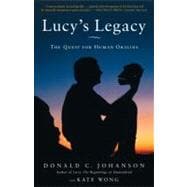
Note: Supplemental materials are not guaranteed with Rental or Used book purchases.
Purchase Benefits
What is included with this book?
| The Hominid Family Tree | p. x |
| Key Hominid Sites | p. xii |
| Lucy | |
| The Woman Who Shook Up Man's Family Tree | p. 3 |
| Unfinished Business | p. 22 |
| Rocky Beginnings | p. 33 |
| Pay Dirt | p. 59 |
| Several Successful Field Seasons | p. 83 |
| Getting to Know Lucy Better | p. 98 |
| Lucy's World | p. 111 |
| Growing Up Australopithecine | p. 129 |
| Lucy's Ancestors | |
| The Dawn of Humankind | p. 149 |
| The First Australopithecines | p. 166 |
| Lucy's Descendants | |
| Ecce Homo | p. 183 |
| Leaving the Motherland | p. 201 |
| The Hobbits of Flores | p. 216 |
| The Neandertals | p. 234 |
| The Rise of Homo sapiens | p. 252 |
| Unsolved Mysteries | p. 269 |
| Epilogue The Discovery of Ardi | p. 283 |
| Selected References | p. 295 |
| Acknowledgments | p. 305 |
| Index | p. 309 |
| Table of Contents provided by Ingram. All Rights Reserved. |
The New copy of this book will include any supplemental materials advertised. Please check the title of the book to determine if it should include any access cards, study guides, lab manuals, CDs, etc.
The Used, Rental and eBook copies of this book are not guaranteed to include any supplemental materials. Typically, only the book itself is included. This is true even if the title states it includes any access cards, study guides, lab manuals, CDs, etc.
Excerpted from Lucy's Legacy: The Quest for Human Origins by Kate Wong, Donald Johanson
All rights reserved by the original copyright owners. Excerpts are provided for display purposes only and may not be reproduced, reprinted or distributed without the written permission of the publisher.